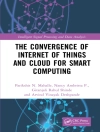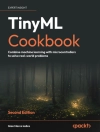This book describes algorithmic methods and parallelization techniques to design a parallel sparse direct solver which is specifically targeted at integrated circuit simulation problems. The authors describe a complete flow and detailed parallel algorithms of the sparse direct solver. They also show how to improve the performance by simple but effective numerical techniques. The sparse direct solver techniques described can be applied to any SPICE-like integrated circuit simulator and have been proven to be high-performance in actual circuit simulation. Readers will benefit from the state-of-the-art parallel integrated circuit simulation techniques described in this book, especially the latest parallel sparse matrix solution techniques.
Jadual kandungan
Introduction.- Related Work.- Overall Solver Flow.- Parallel Sparse Left-Looking Algorithm.- Improvement Techniques.- Test Results.- Performance Model.- Conclusions.
Mengenai Pengarang
Xiaoming Chen is now a Visiting Assistant Professor with the Department of Computer Science and Engineering, University of Notre Dame. He received the B.S. and Ph.D. degrees from the Department of Electronic Engineering, Tsinghua University, in 2009 and 2014, respectively. His research interests include hardware security, deep learning, parallel circuit simulation, and circuit reliability.
Yu Wang is an Associate Professor with the Department of Electronic Engineering, Tsinghua University. He received the B.S. and Ph.D. (with honor) degrees from the Department of Electronic Engineering, Tsinghua University, in 2002 and 2007, respectively. His research interests include parallel circuit analysis, power/reliability-aware system design methodology, brain inspired computing, and application specific hardware computing.
Huazhong Yang is a specially-appointed Professor of the Cheung Kong Scholars Program with the Department of Electronic Engineering, Tsinghua University. He received the B.S. degree in microelectronics and the M.S. and Ph.D. degrees in electronic engineering from Tsinghua University, in 1989, 1993, and 1998, respectively. His current research interests include wireless sensor networks, data converters, parallel circuit simulation algorithms, nonvolatile processors, and energy-harvesting circuits.












